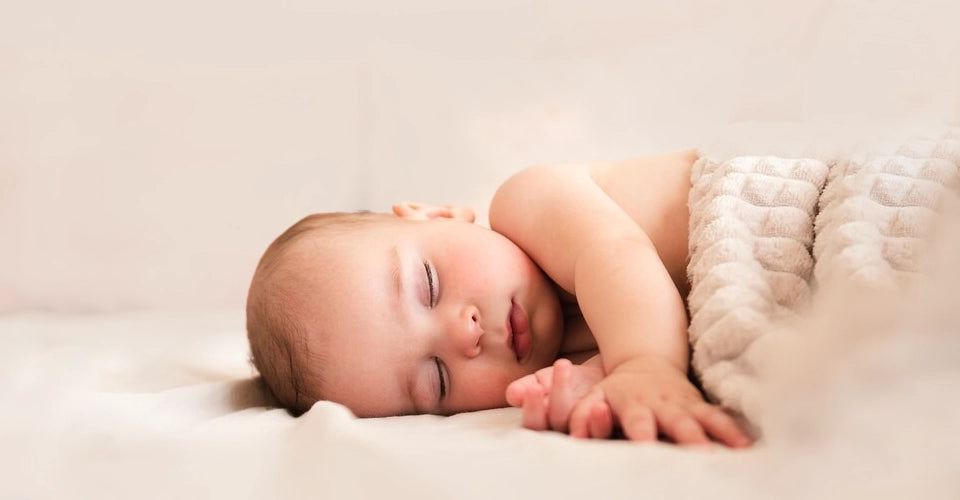Understanding the Baby Sleeping Cycle: A Parent’s Guide

As a new parent, we are sure you have thought about these questions at some point in your early parenting journey. These are the most common questions parents ask with regard to their newborns and their sleep patterns. Sleep is also one of the most common concerns parents have when they discuss their children’s health and habits, and everyone has a unique take on it. Some newborns sleep during normal hours, while others find it hard to fall asleep. Some newborns have long sleeping hours, while others thrive on power naps. Perhaps one of the hardest challenges for parents in the newborn phase is to establish a healthy sleeping schedule, which by no means is an easy task.
We are here to share some essential sleep-related information that will help you tackle all your sleep-related questions.
Scientific studies conducted on infant sleep show that there is a significant “positive association between sleep, memory, language, executive function, and overall cognitive development and physical growth” (Tham, Schneider & Broekman, 2017). There are innumerable research projects by child developmental psychologists who have been studying children’s sleep for decades, which continue to emphasise how important sleep is for our brain and body’s healthy development. Newborn sleep is a critical factor in healthy growth and development because this is the foundational stage of an individual’s life.
Let us first understand what the basic sleep cycles are for infants. Newborns may sleep roughly 8–9 hours during the day and roughly 8–9 hours at night, where they wake up only to feed every few hours because of their small stomachs and new digestive systems (Standard Medicine—Children's Health). A baby may sleep for longer durations at a stretch in their period or might take just 30-45 minute naps after feeding. The total duration of newborn sleep in a day is roughly 14–17 hours on average. About half of these hours of sleeping, babies are in REM sleep, where they sleep lightly, they have dreams, and there is rapid eye movement back and forth. The rest of their sleep is Non-REM, where the baby transitions from drooping eyes and drowsiness to deep sleep where the baby does not move.
Having understood the basics of sleep cycles in newborns, it is important to understand what the key signs are that your baby shows you when she is ready to sleep. Your baby will start to rub her eyes, yawn, get cranky or fussy, and start to look away instead of paying attention to you or her surroundings. At this stage, your baby may prefer to be fed, rocked, or sung to. These behaviours become sleep routines and allow the baby to develop an association between the action and sleeping. To enable a comfortable sleeping routine for your baby and you, parents need to be consistent in how and when they put their babies to sleep. While establishing clear routines and schedules is difficult with newborns, it paves the way for sleep routines when they are 6 months and older.
Even with a newborn, parents must identify and stick to a bedtime routine, especially for night sleep. For example, parents can massage, bathe and feed the baby in the same sequence, followed by playing soft music or singing. If a baby is rocked to sleep, she may continue to prefer that method of sleeping even in the following months of her life. Recent sleep experts indicate that there is no strict rule against rocking or carrying a child to sleep, as it provides comfort, safety, and warmth to the infant. Bedtime routines must be developed based on the personal preferences of the parents; however, you must follow the same routine every day. This will help the child understand that it is time to sleep and will make the whole process easier, leading to the baby falling asleep independently.
Another factor to keep in mind while establishing sleep routines is the environment of the child’s sleep. The baby’s room should have dimmed lights, as a darker room will signal your child’s brain that now it's time to sleep. A quiet and dark room also creates fewer opportunities for stimulating your baby before bedtime; this will reduce bedtime struggles. Additionally, while the safest option for a baby’s sleep is in a crib/cot, many Indian parents choose to co-sleep. In this situation, there should be no pillows or heavy blankets near a child’s face, as they may accidentally suffocate a newborn. The child must always sleep on her back on a flat surface.
Millennial parents have now started finding information on “sleep training”; there has been a lot of debate on how “rocking to sleep” is a poor method of putting your baby to sleep, who should learn to sleep independently after a certain age (between 4-6 months). There are several well-known sleep training methods, some of which are described briefly as follows:
1. The Ferber Method:
Also known as the “Check and Console” method, where you finish your bedtime routine, put your baby in their crib and leave the room for a few minutes. You then keep coming back to check on them and console them to fall asleep. You cannot rock or feed your baby to sleep as that hampers independent sleeping.
2. Cry It Out method by Weissbluth:
Here, the parent finishes the bedtime routine, settles the baby in the crib (awake) and leaves the room. The parents will experience a lot of crying from the baby, but they are advised to not intervene and allow the child to sleep by herself without you present in the room. This is one of the most debated methods as many sleep consultants now highlight how detrimental so much crying can be for your infant baby.
3. Chair Method:
After the baby’s bedtime routine, the parent settles the baby in the crib, but does not leave the room. They sit in a chair near the crib till the baby falls asleep, and every few days, the parents move their chair further away from the room.
Every sleep consultant shares a different perspective on sleep training your baby, how soon to sleep train them and how to help them fall asleep without being dependent on you. If you are struggling with your baby’s sleep cycles, it is best to seek advice from a sleep expert. There is no “one size fits all” solution here; parents must choose a method of sleep training that suits their individual parenting styles.
It is not easy to care for a newborn baby, because your body is exhausted from the constant feedings, night wakings, sleep deprivation and physical fatigue. This can also lead to a lot of emotional disturbances, especially for the mother, who has recently undergone severe hormonal changes during her pregnancy and birthing experiences. At this challenging stage, it is important to remember that every child is unique and may not fit into the average or “normal” sleep cycles of other babies. Instead of comparing your baby to others’, parents must gather more information on newborn sleep cycles, establishing healthy sleeping routines, safety during sleep time and above all, how to make this beautiful parenting experience happy for both you and your baby.
If you have any questions or concerns about sleep in newborns, feel free to share your thoughts in the comments below.
Happy parenting! 😊
Sources:
Colleen de Bellefonds, C. E. (2023, February 24). Getting baby on a sleep schedule. What to Expect. https://www.whattoexpect.com/first-year/baby-sleep-schedule.aspx
Stanford Medicine Children’s health. Stanford Medicine Children’s Health - Lucile Packard Children’s Hospital Stanford. (n.d.). https://www.stanfordchildrens.org/en/topic/default?id=newborn-sleep-patterns-90-P02632
Tham, E. K., Schneider, N., & Broekman, B. F. (2017, May 15). Infant sleep and its relation with cognition and growth: A narrative review. Nature and science of sleep. https://www.ncbi.nlm.nih.gov/pmc/articles/PMC5440010/


